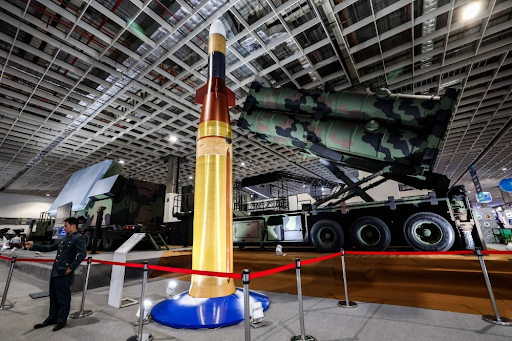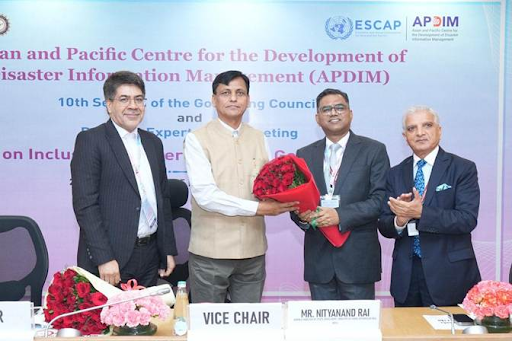



The Indian Agriculture Minister visited Brazil to enhance agricultural cooperation, focusing on small farmers, food security, and sustainable farming. At the 15th BRICS Agriculture Ministers' Meeting, India emphasized collaboration in technology, research, and food processing. India plans to boost soybean production and reduce oil imports by setting up processing plants.

Copyright infringement not intended
Picture Courtesy: PIB
The Union Agriculture Minister visited Brazil to strengthen India’s agricultural ties with Brazil and participate in the 15th BRICS Agriculture Ministers’ Meeting in Brasilia.
The meeting brings together agriculture ministers and officials from BRICS countries—Brazil, Russia, India, China, South Africa, and new members like Saudi Arabia, Egypt, UAE, Ethiopia, Indonesia, and Iran.
During the meeting, the Indian Agriculture Minister emphasizes the importance of small farmers. He says global food security depends on protecting and empowering them. He pushes for stronger cooperation in agricultural technology, research, food processing, and trade among BRICS nations. India commits to inclusive and sustainable farming, reflecting the philosophy of “Vasudhaiva Kutumbakam” (the world is one family).
The Indian Agriculture Minister holds bilateral meetings with Brazil’s Minister of Agriculture and Livestock. They discuss ways to enhance cooperation in agriculture, technology, rural development, and food security. He observes advanced technologies in mechanization, irrigation, and food processing.
Currently, India imports soybean oil, the minister announces plans to collaborate with Brazil to set up soybean production and processing plants in India. This move aims to increase exports and reduce import dependency. He also explores cooperation in seed research, climate-friendly soybean varieties, and precision farming to benefit Indian farmers.
|
Why Is Soybean Production a Priority? India imports $20 billion worth of edible oils annually, including soybean oil. Brazil, the world’s largest soybean exporter, offers valuable lessons. By adopting Brazil’s climate-tolerant seeds, mechanization, and precision agriculture, India aims to increase local soybean production and processing. |
The 15th BRICS Agriculture Ministers’ Meeting organized in Brasília, Brazil. BRICS is a group of countries—Brazil, Russia, India, China, South Africa, and new members like Egypt, Ethiopia, Iran, Saudi Arabia, and the United Arab Emirates. These nations work together to solve global problems. This meeting focuses on agriculture, aiming to make farming fair, sustainable, and inclusive.
BRICS countries represent about 40% of the world’s population and around 30% of global GDP. Their decisions on food and farming affect millions.
The theme of the 2025 meeting is “Promoting Inclusive and Sustainable Agriculture through Cooperation, Innovation, and Fair Trade among BRICS Nations.”
BRICS Land Restoration Partnership
The meeting launched a new initiative called the BRICS Land Restoration Partnership, to fight land degradation, desertification, and soil fertility loss.
The partnership encourages BRICS countries to share technology and ideas to restore damaged land. India commits to restoring 26 million hectares of degraded land by 2030, aligning with global goals.
Support for Small Farmers
Indian representatives share its programs like the National Mission for Sustainable Agriculture (NMSA) and Zero Budget Natural Farming (ZBNF). These help farmers grow food without harming the environment or spending too much money.
Fair Trade and Food Security
BRICS countries promise to fight unfair trade rules that hurt global food supply. They reject protectionist measures that go against World Trade Organization (WTO) rules, to ensure food moves freely between nations, keeping prices stable.
Climate-Friendly Farming
The meeting promotes farming that adapts to climate change. For example, India’s National Initiative on Climate Resilient Agriculture (NICRA) develops crops that survive droughts or floods. BRICS nations also push for digital tools like AgriStack and drones to make farming smarter and more efficient.
Must Read Articles:
PM Attended BRICS Summit in Russia
Trump Threatens tariffs on BRICS
Source:
|
PRACTICE QUESTION Q. Consider the following statements in the context of the New Development Bank (NDB): 1. It was established by the BRICS countries. 2. The headquarters is in Shanghai, China. 3. The initial authorized capital was $10 billion. Which of the above statements are correct? A) 1 and 2 only B) 2 and 3 only C) 1 and 3 only D) 1, 2 and 3 Answer: A Explanation: Statements 1 and 2 are correct: The NDB was established by the BRICS countries. The idea behind the NDB was first proposed by India at the 4th BRICS Summit in New Delhi in 2012 and the formation treaty was signed in 2014 in the sixth BRICS Summit in Fortaleza, Brazil. The NDB was established to support infrastructure, and sustainable development projects in BRICS member countries, and in other emerging economies. Its headquarter is in Shanghai, China. Statement 3 is incorrect: The initial authorized capital (AC) of the NDB was $100 billion. The AC is the maximum amount of share capital that the bank is allowed to issue to its members. The initial subscribed capital was set at $50 billion, with equal contributions from the founding members (BRICS countries). |







© 2025 iasgyan. All right reserved